Since I had spent the morning in the Natural History Museum I thought I should potter around Kensington in the afternoon, starting with walking along the south side of Kensington Gardens with its views back to the Royal Albert Hall and of course to the wonderful Albert Memorial.
St Mary Abbots, built by Sir George Gilbert Scott who also designed the Albert Memorial.
Grand Victorian villas around here - this area is top real estate for London.
Not only did Ford Maddox Ford live here, but so did his mistress, but not his wife who refused a divorce.
Holland Park is one of the nicest of London's parks. Unfortunately most of Holland House went in the Blitz, but the remains are still picturesque.
Unexpected bonus in one of the gardens was this peacock.
The garden in front of the orangery is beautiful, but in my view rather let down by the fountain.
This is the Tower House, one of those quirky Victorian whimsical constructions, built in a 13th century French Gothic style. As one does.
Next door behind dense foliage is this vast home once owned by director Michael Winner, but actually built for the artist Sir Samuel Luke Fildes. This area was a great colony for successful Victorian painters.
Next artist up is the pre-Raphaelite William Holman Hunt, although he takes second billing to the king of the Zulus
And this is Leighton House, named after Frederic, Lord Leighton, in his days the most successful artist bar none. The interiors are superb and it is a museum but currently closed not only because of Covid but also because of renovations - they seem to be taking over the neighbouring house to the right for extra exhibition space.
Fun fact, but not for Lord Leighton, is that his baronetcy is the shortest in the history of the English peerage. He became the first artist to be granted a peerage (as I say, he was very successful) and promptly died the next day, without leaving any issue. So that was the end of that line, and you can't really get shorter than one day.
Now into a very beautiful but lesser known London square, Edwardes Square. Developed by a Frenchman during the Napoleonic Wars, which must have been fun.
As I say, the area does not lack for huge villas.
But the finest square in Kensington is, unsurprisingly, Kensington Square. It is also among London's oldest squares, being first developed in the 1680s. It also differs from most of the other London squares which were laid out on what was then the edges of London. This one was laid out instead on the edge of Kensington, deliberately a distance away from "London".
Kensington's development, and its popularity with London's wealthiest citizens can be attributed to King William III's chronic asthma. No inhalers in the 17th century so best you could do was move out of smelly London for a rural retreat - which at the time the little village of Kensington was. And since at that time the King was the hub of power and politics, courtiers followed and then everyone needed to serve the new population, so the area's orchards soon turned into squares and terraces.
Kensington Square is one of those squares which isn't laid out as a single plan of uniform houses - they are all different.
At the "best" side one finds this nice, but plain, home to Hubert Parry. Not a household name, but he wrote Jerusalem.
John Stuart Mill next door should need no introduction. No man is an island.
And then the next neighbour is the Convent of the Assumption
The garden in the centre of the Square is, unfortunately for me, private, so could only take photos through the railings
And this large house was once home of another of the pre-Raphaelites, Edward Byrne-Jones.
Although it really is a pretty square, my favourite Georgian house in the vicinity is round the corner. once home to William Makepeace Thackeray.
And on my way home, not a 100 metres from my house, a cormorant on the New River.




















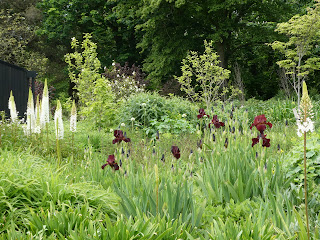































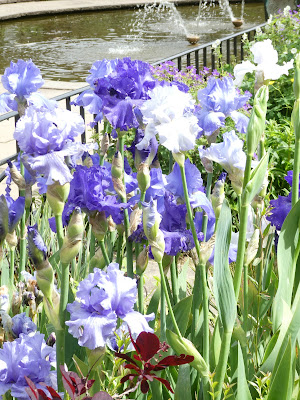


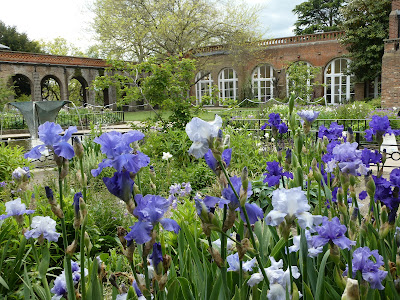
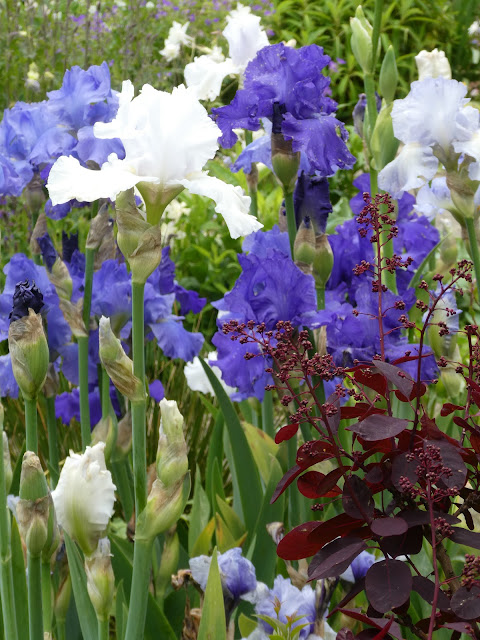






















































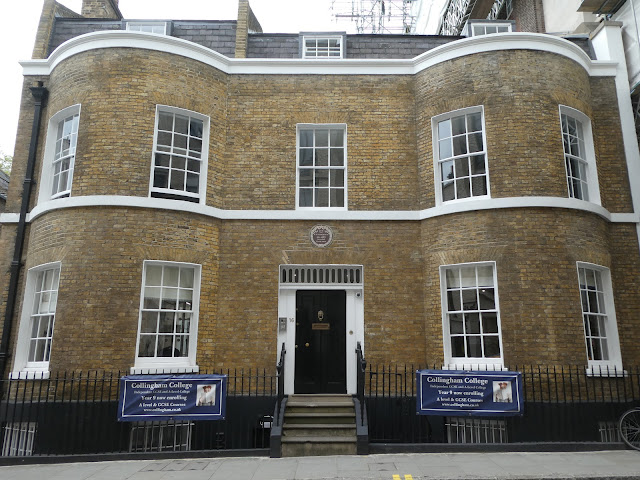




No comments:
Post a Comment